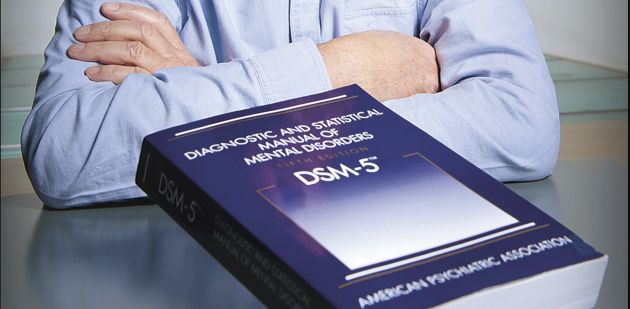The new edition of the bible of psychiatry has been met with mixed reviews from specialists.

The publication in May 2013 of the 5th edition of the bible of psychiatry – the DSM-V (Diagnostic and Statistical Manual of Mental Disorders) – has aroused fierce criticism. Allen Frances, an American psychiatrist known for having overseen the revision of the DSM-IV, reproaches it in particular for inducing over-diagnosis in his essay, “Are we all mentally ill?” Q&A with Pierre Bovet, physician in chief of the Psychiatry Department at the Lausanne University Hospital (CHUV).
IN VIVO Why is the DSM-5 arousing so much controversy?
Pierre Bovet In 1980, the publication of the DSM-III was met with relief by many psychiatrists. It aimed to put forward a classification and definitions of mental disorders that could be shared by all psychiatrists. The authors of this third edition only considered relevant the criteria for defining mental disorders’ symptoms that could be “objective”, seen by an observer as objects independent of the persona of the patient, and they disregarded an entire fundamental part of what constitutes the nature of psychiatric conditions and their relational aspect. Over the years, the flaws in this epistemology appeared more and more glaring, not only in the eyes of psychotherapists but also in those of researchers. In this context, the DSM-V was eagerly anticipated, and several hints from the working groups that prepared the manual suggested that epistemological reflection was in the offing. This was not the case, and even the most enthusiastic promoters of the previous editions started to complain.
IV How does the DSM influence psychiatric practice?
PB The problem is particularly racute in the United States, as the criteria of the DSM hold legal force in the fields of insurance and justice. In addition, psychopathology teaching is often limited to what the manual says; in other words, a given mental disorder is “only” what the DSM says. The situation is less dramatic in Europe, where the DSM holds no legal weight and where a more refined and deeper psychopathology is still taught in many areas. But danger lies ahead! Scientific journals tend to accept articles only if they follow the criteria of the DSM – which greatly limits research.
IV Allen Frances also reproaches the DSM-5 for inducing over-diagnosis…
PB In this latest edition, the “threshold” criteria for defining certain disorders, such as hyperactivity with attention deficit in children, have been reduced. Moreover, certain reactions considered in the previous editions as “normal” (e.g. a period of depression after bereavement) are now considered as pathological; somewhat excessive types of behaviour (sexual or with the internet) are classed as being “substance-free addictions” on the basis of criteria which are poorly established from a scientific point of view; and minor cognitive disorders that normally appear with age are “pathologised”, contributing to increasing anxiety in people in whom small memory lapses arise, because it erroneously leads them to believe that they are on the brink of Alzheimer’s disease. It will have to be seen how these innovations will be applied in practice by psychiatrists in Switzerland. At the moment, the problem is under-detection and under-treatment of certain mental disorders such as major depression, because of the stigmatisation which still accompanies psychiatric disorders.